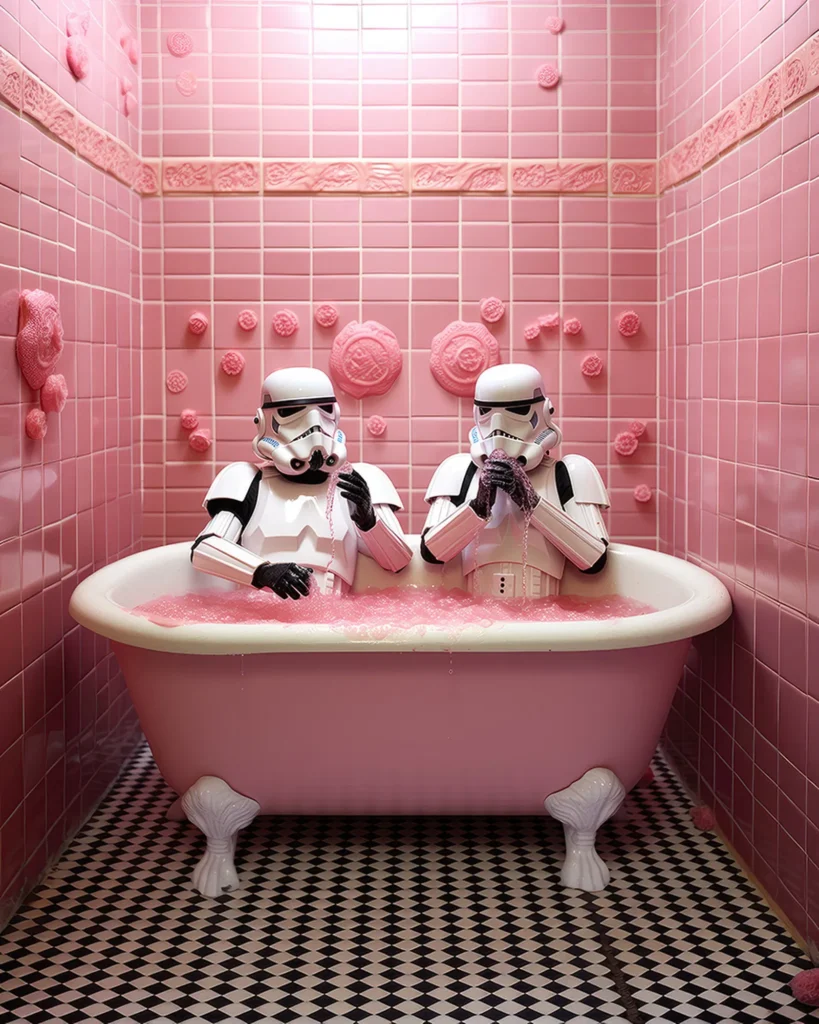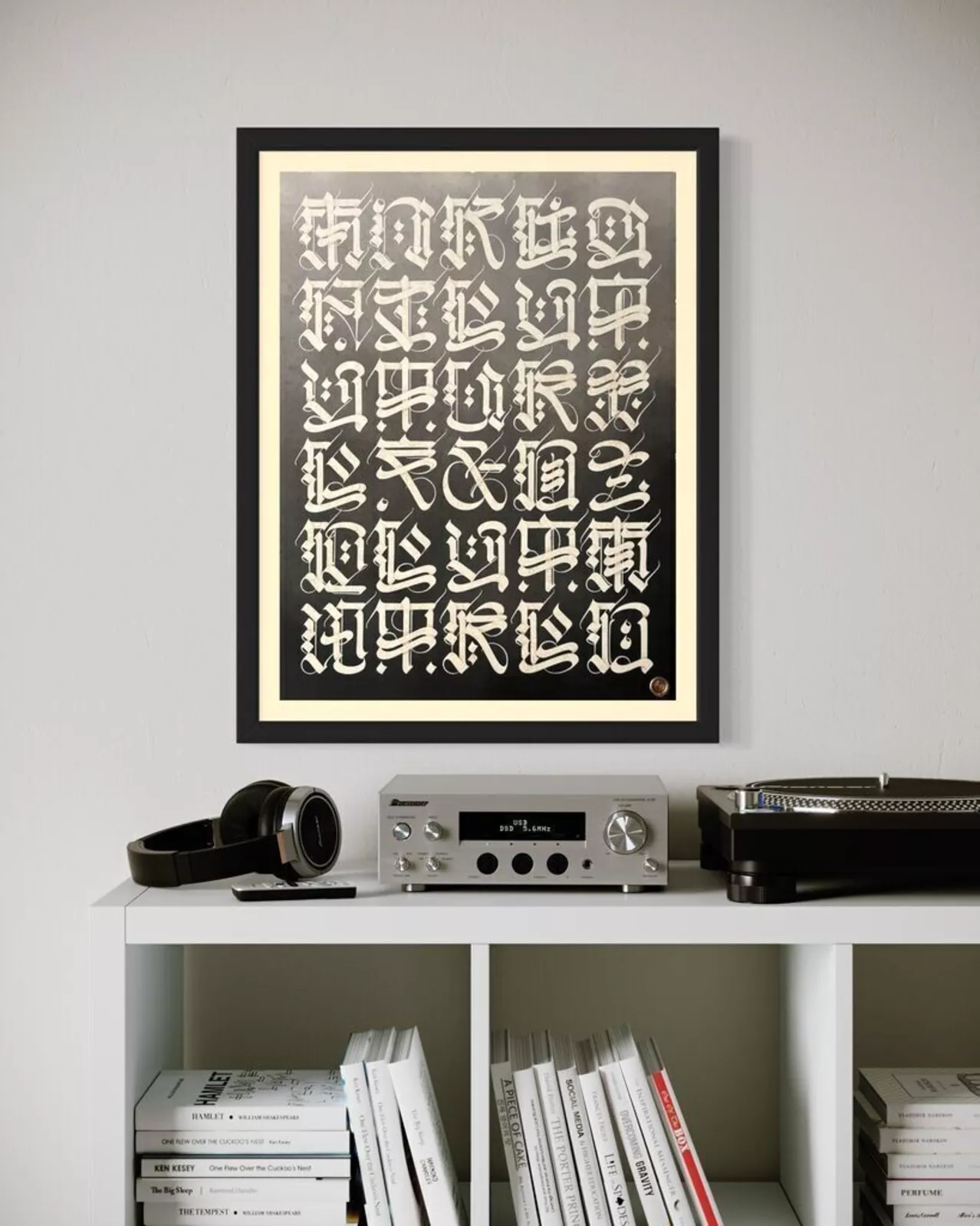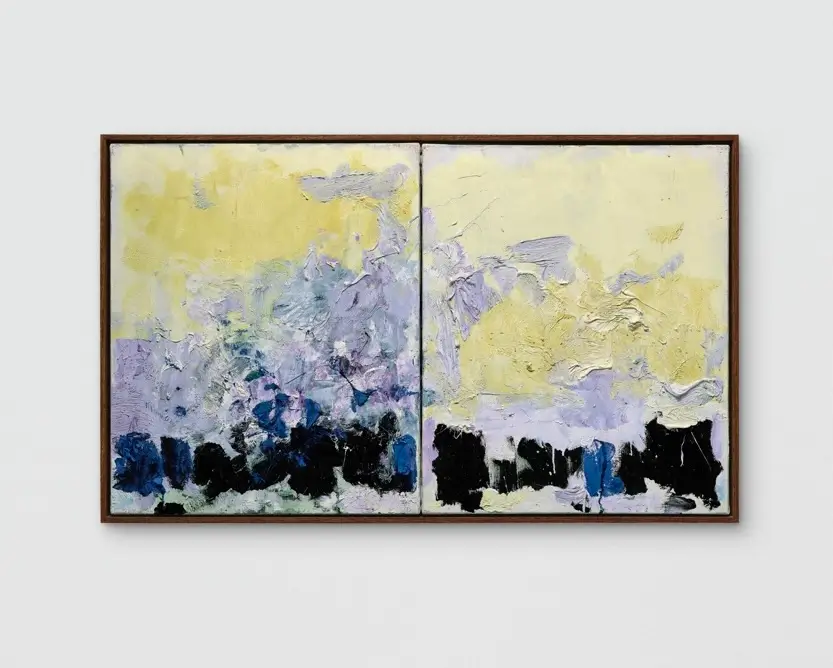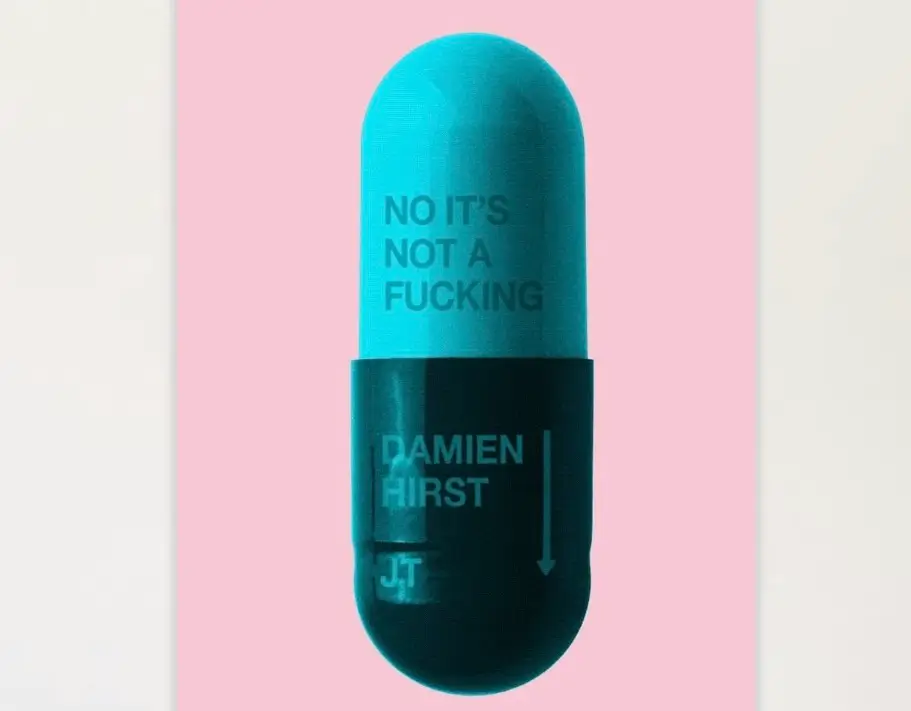In Suds and Siths, the enigmatic conceptual artist Slender O’Kenoshi repositions some of the most recognizable figures in popular cinema within an environment that is deliberately unfamiliar. The stormtroopers—normally seen in militarized formations, advancing across galactic battlefields—are instead found seated in a vintage claw-foot bathtub, surrounded by pastel tiles and ornamental flourishes. The scene is incongruous yet carefully staged, a tableau that disarms the iconography of uniformed authority and reframes it through domestic ritual.
Recontextualization as Method
O’Kenoshi has long been associated with works that probe how cultural symbols shift when extracted from their native context. Suds and Siths belongs to this tradition. By placing soldiers of empire into a chamber of bathwater and bubbles, he exposes the fragility of their constructed menace. What had been emblems of discipline and obedience now appear awkward, uncertain, even absurd.
This process—recontextualization—is central to twentieth- and twenty-first-century art history. From Duchamp’s readymades to Barbara Kruger’s text-driven confrontations, the removal and reinstallation of familiar objects in unexpected settings has consistently unsettled audiences. O’Kenoshi continues this lineage, but with the imagery of contemporary folklore rather than industrial materials or advertising slogans.
The Language of Color
The pink tiles that surround the scene are not incidental. They dominate the composition, rendering the environment visually overwhelming and tonally insistent. Pink here is not merely decorative; it functions as a counterforce to the monochrome of the armor. Where the stormtrooper suit projects rigidity and conformity, the saturation of pink suggests softness, ornament, and artifice.
The color reorients interpretation. It undermines martial neutrality and suggests a parallel conversation about coded aesthetics—masculinity, femininity, and the cultural perception of color in shaping power. In this way, Suds and Siths becomes not only about the recontextualization of character but about the destabilization of chromatic authority.
Domestic Space as Stage
Bathrooms are among the most intimate spaces in architectural design. They carry associations of privacy, care, and routine. O’Kenoshi situates his figures in this sphere to contrast their anonymity with the personal. Soldiers known for faceless uniformity are set against a background that implies vulnerability. The juxtaposition is not comic so much as revealing: when symbols of control are relocated into private rituals, their performative nature is exposed.
The claw-foot tub and patterned flooring evoke a sense of vintage domesticity, a counterpoint to the futuristic settings in which stormtroopers are usually imagined. This deliberate anachronism heightens the sense of dislocation. The image is both timeless and temporally unstable.
The Absurd and the Serious
While the composition may appear humorous at first glance, O’Kenoshi does not present humor as an end in itself. Instead, the absurdity becomes a method of estrangement. In the tradition of Beckett or Ionesco, absurd situations reveal the instability of systems we otherwise accept as fixed. Suds and Siths achieves this by revealing that even cultural archetypes of discipline can be rendered by the staging of incongruity.
This approach distinguishes the work from parody. It is not designed to ridicule but to invite reflection on how quickly symbols lose gravity when placed outside the narratives that sustain them.
Pop Icons as Folklore
Stormtroopers, beyond their cinematic origins, function today as visual folklore. They populate fan conventions, advertising campaigns, and internet memes. Their meaning has extended far beyond the franchise that produced them. O’Kenoshi acknowledges this expanded semiotics. He selects them not only for their recognition but for their malleability.
By situating them in Suds and Siths, he participates in a broader conversation about the ownership of cultural symbols. Who defines their meaning—the original creator, or the countless reinterpretations across media and culture? The work implies that ownership is diffuse, that once symbols enter the public imagination, they evolve independently.
Echoes of Contemporary Art
The piece resonates with broader currents in contemporary practice. Jeff Koons’s polished sculptures, Takashi Murakami’s saturation of popular iconography, and Cindy Sherman’s staged portraits all employ familiar imagery refracted through new conditions. O’Kenoshi’s contribution lies in the fusion of cinematic archetypes with spaces of intimacy.
The technical polish of Suds and Siths is equally significant. The lighting is theatrical yet precise, illuminating the armor’s gloss while allowing the surrounding pink tiles to hum with saturation. This attention to craft distances the work from disposable internet imagery. Though the composition resembles a meme, its execution insists on seriousness.
Critical Reception
Responses to Suds and Siths have ranged from delight to unease. Some critics highlight the work’s skittish dismantling of cultural icons, while others emphasize its commentary on the banality of power. Audiences often report initial laughter that quickly gives way to reflection, a rhythm O’Kenoshi seems to deliberately cultivate.
The work has also sparked debate about the permeability of boundaries between fan culture and fine art. In appropriating such recognizable figures, O’Kenoshi positions himself between mass culture and critical discourse, reminding us that the two are not mutually exclusive.
No comments yet.








